For my final Wonderblog entry, I wanted to focus on my site as well as the journey to my site through consecutive photography, put together in a video format. This photo series of Lake Surprise at Watchung Reservation introduced me to much more wildlife at my site than I had seen previously. I spent a long time sitting and waiting for animals to appear that I could capture on camera. Others, like the rabbit, were practically waiting for me. This project connected me to my site because I felt a sense of purpose – though it was for personal gain – as I took photos and edited them together once home. The project pushed my boundaries for patience and camera skills as I encountered many issues with exposure and aperture while taking photos. Constantly, I was having to redo series of photos and at points was considering giving up and doing a simpler project. I persisted through these issues of skill and character and finally produced a project that I feel a deep connection to as well as its subject.
Posts
Entry #3: Lake Surprise (Mountainside, NJ) – July 5th 2021
Monday July 5th at 2:30. 88° F, partly cloudy, and somewhat humid.
Though it hadn’t rained since my last visit to the site, the ground was just as – if not more – muddy. The bright yellow blossoms of the Earth loosestrife I had seen last time are now wilting and faded in saturation. The buds on the “Golden Bug” tree have not changed in the past few days but less bugs surrounded its buds and flowers. As I was walking to my site, I saw bright green algae on the surface of the north eastern end of Lake Surprise. Upon arriving at my site (at about the midpoint of the lake on the south eastern side), I was surprised to see the same algae was not present in the middle of the lake or near the site at all. Also, the moss-like algae that was present on my first visit to the site was no longer on the surface of the lake as it had been previously. The area is still rich with dragonflies and many flit from low branches to plants and seem to bounce off the surface of the lake.
Why are most of the trees bowed over the lake on the southern side?
The site is on the north west facing side of the lake. Here, most of the trees are bowed towards the lake, if not bent at a 90 degree angle over the lake. The trees on the opposite side of the lake do not share the same curve towards the water that the trees at the site have. This could likely be due to multiple external stimuli such as the sun and water. The trees may be exhibiting hydrotropism or phototropism. The roots of trees may be exhibiting positive hydrotropism that makes the roots grow towards a source of water, which would be Lake Surprise (Dietrich, 2018). Though hydrotropism is usually only observed in roots, the trunks of trees may be mirroring the growth pattern of the roots. Another reason they may be bent towards the lake is a positive phototropism response. The trees may be growing this direction because the coverage of trees in the south eastern laying forest may block out sunlight from the growing trees. Over the lake, there is an obvious lack of tree coverage, allowing more light in. Ultimately, this positive phototropism may be the reason for such bowed pattern of tree growth.
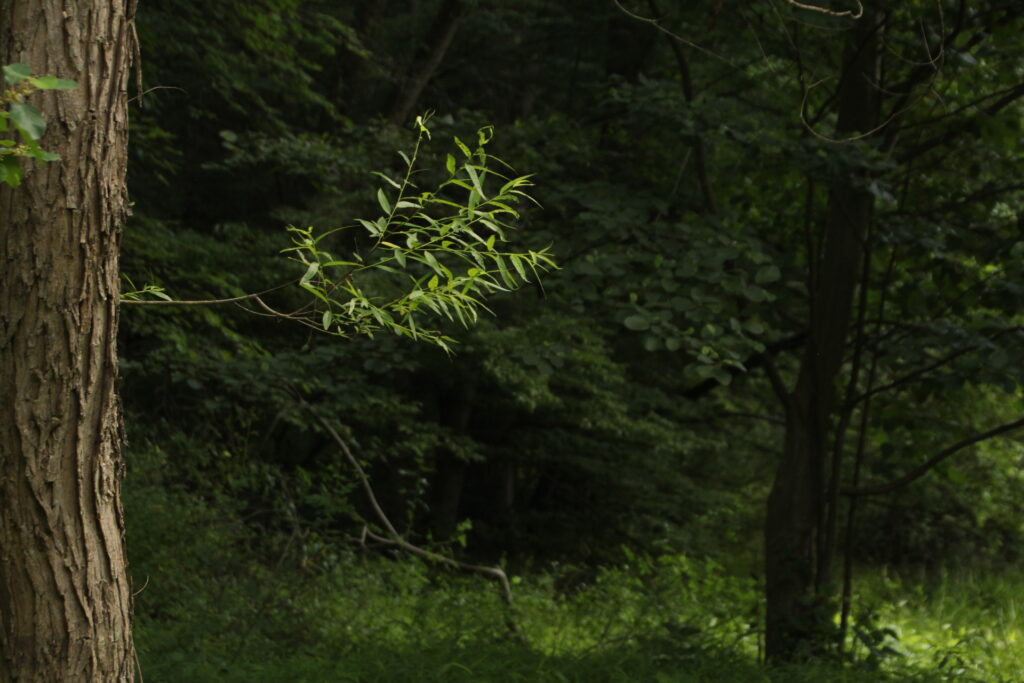
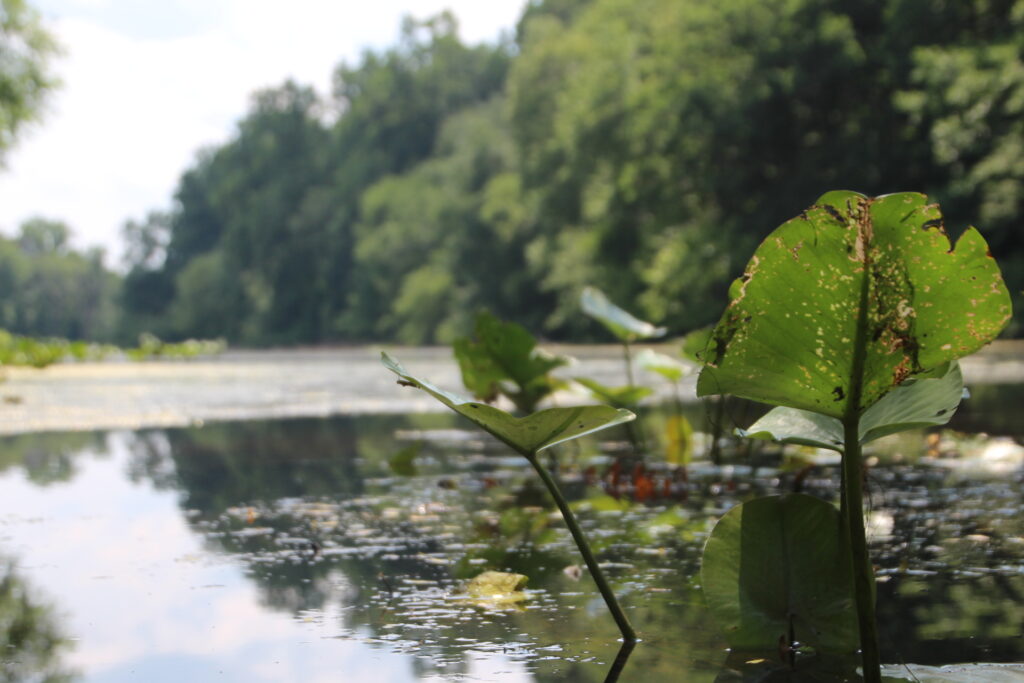
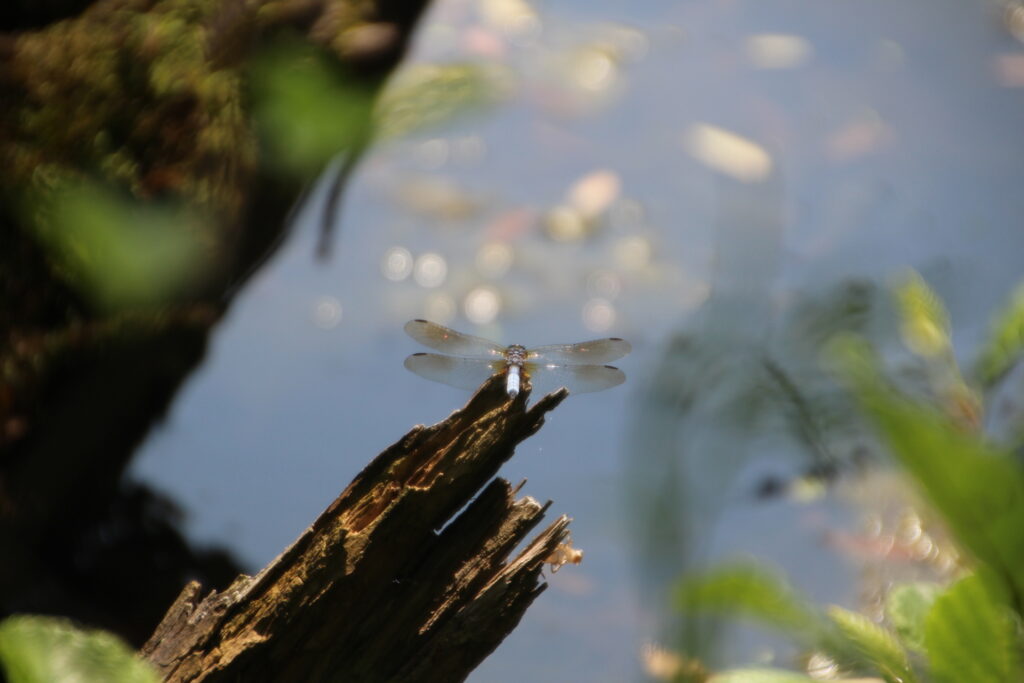
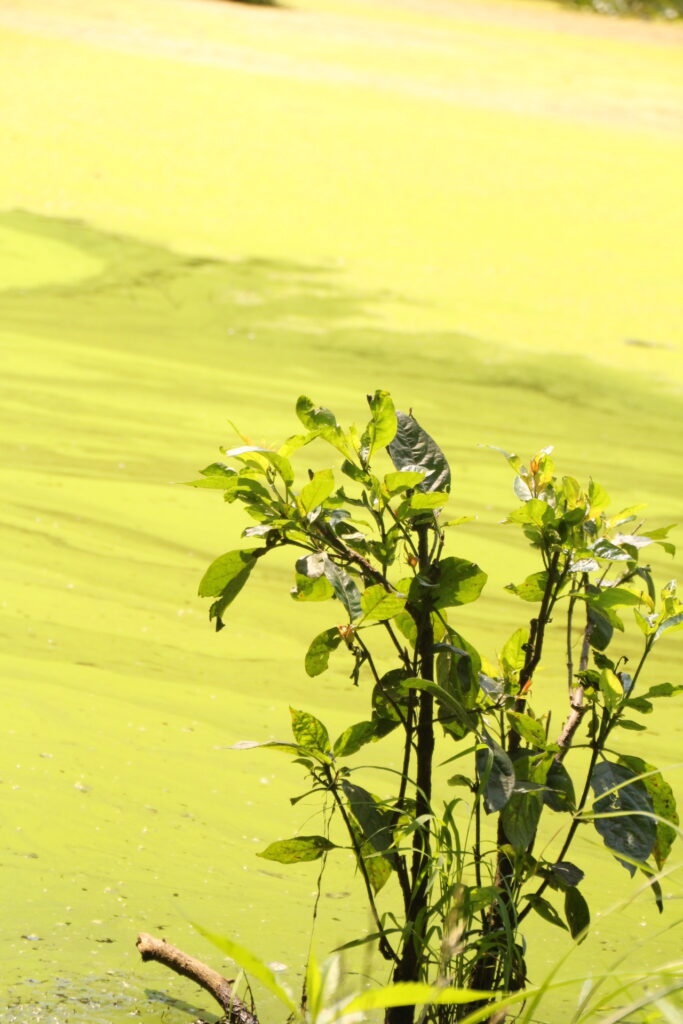
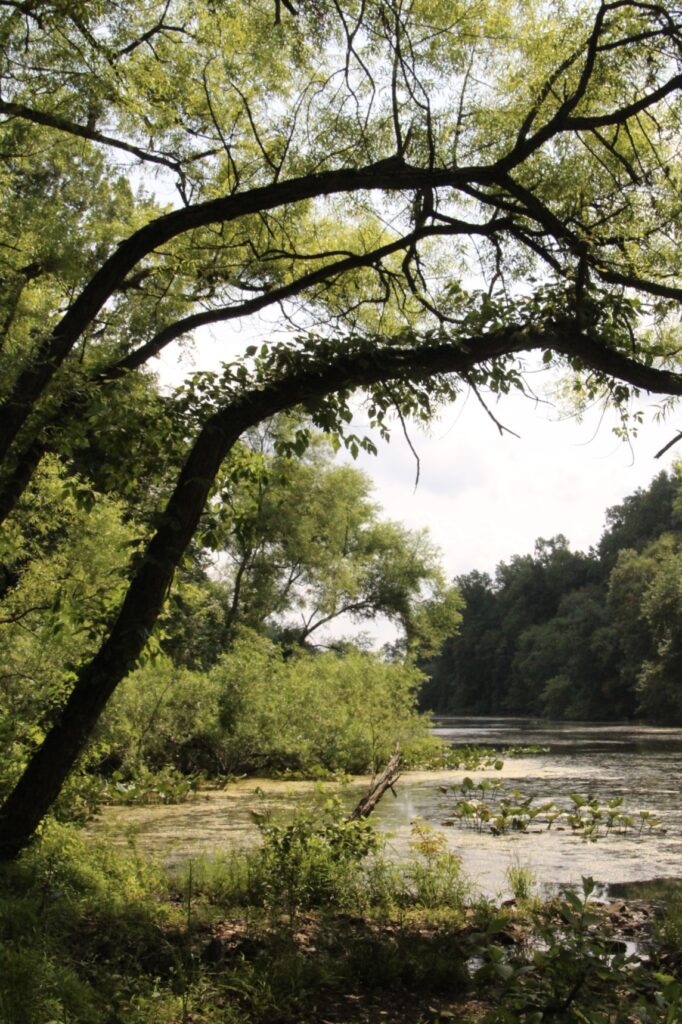
At the site, I noticed more animals than I had previously encountered. I could not identify a single one but as I trudged through underbrush, I heard what must have been some small rodent species running underfoot as I approached. I also heard frog croaks in the Arrowheads but could not find any. They may have been under the mud. Photographing my site did not change my perspective of my site at all but it did offer more insight into what other species may be present. Similar to sketching, photographing nature can take time. One could just point their camera and shoot and be done with it, but patience and care brings better subjects to the foreground. I sat for at least 10 minutes with my camera trained on some branches right at the shore of the lake waiting for dragonflies to land on them so I could get some shots of them. Photographing my site was exciting since it is a dream career of mine and I am looking forward to returning. I may try to go early in the morning to see what different species are present.
More dragonfly pictures because I took so many and I love them:
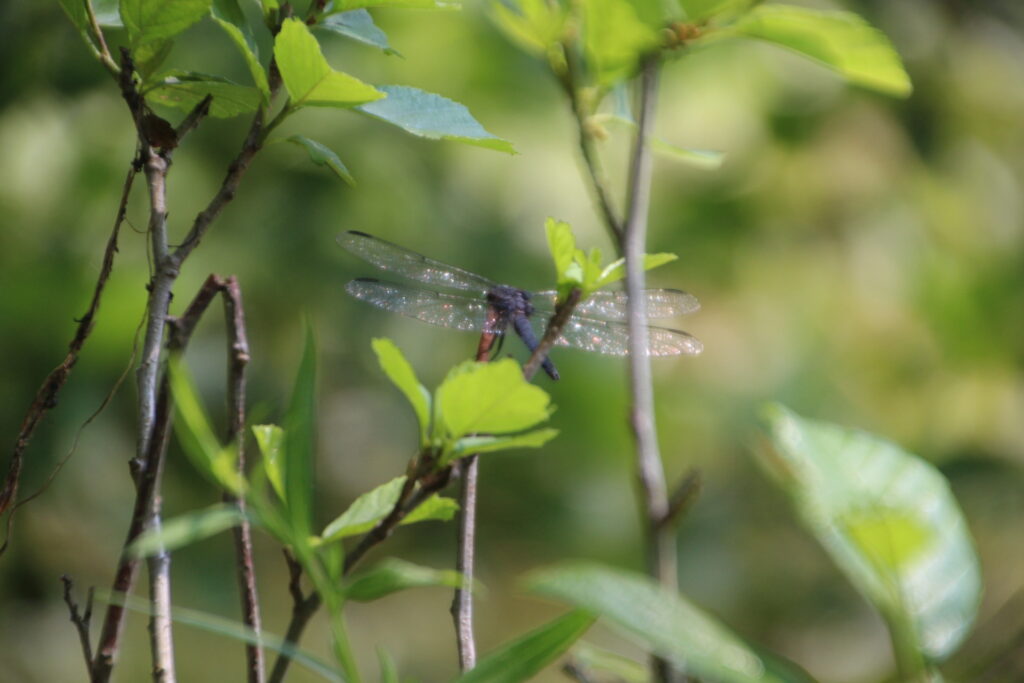
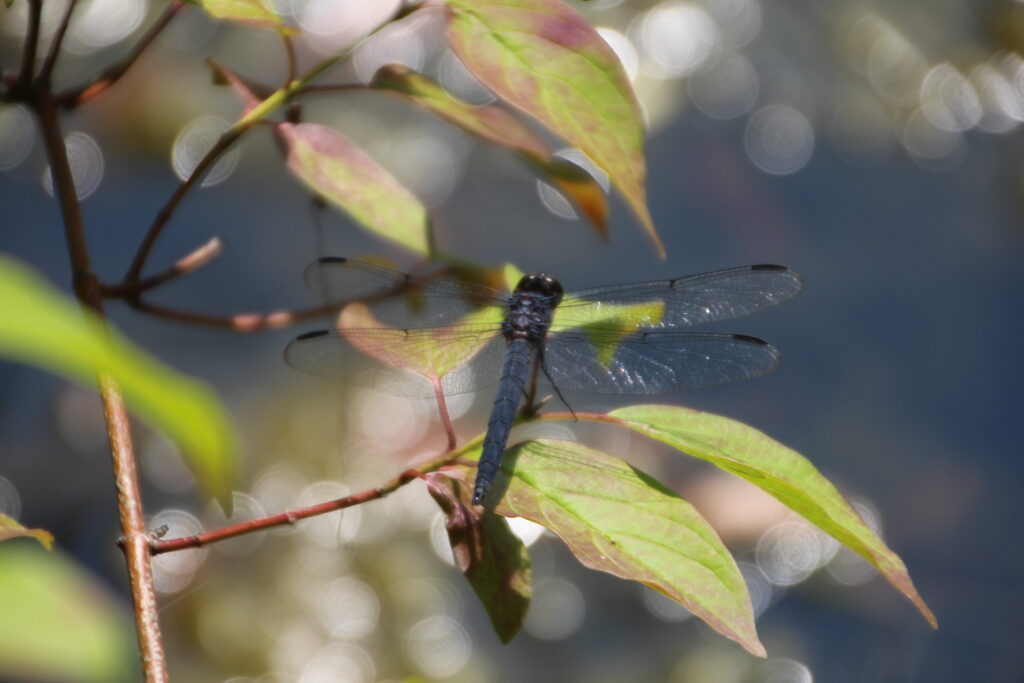
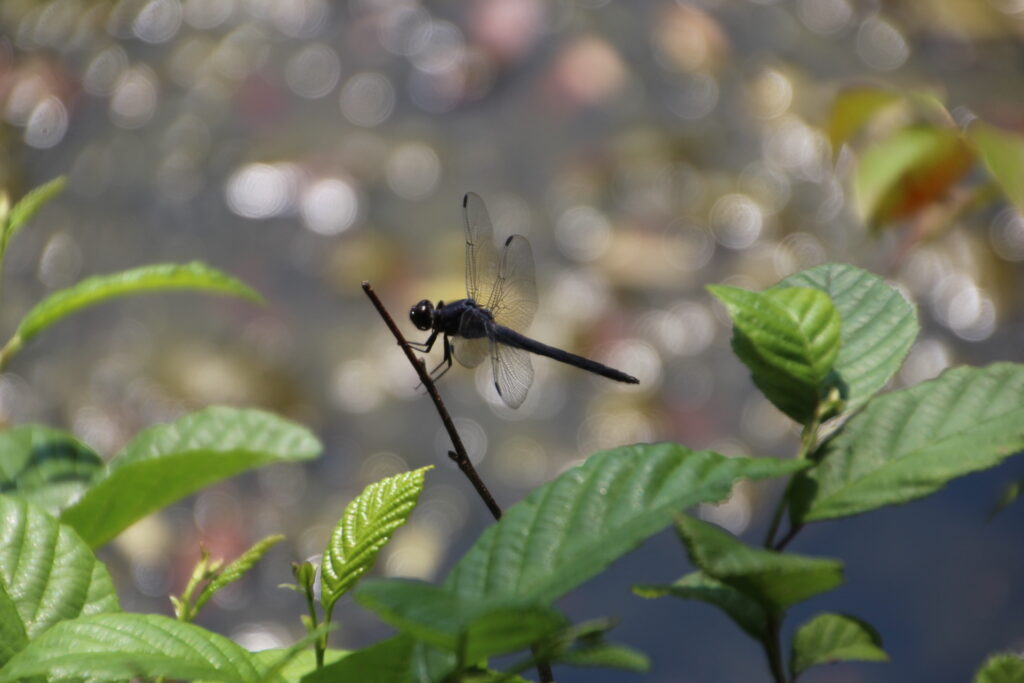
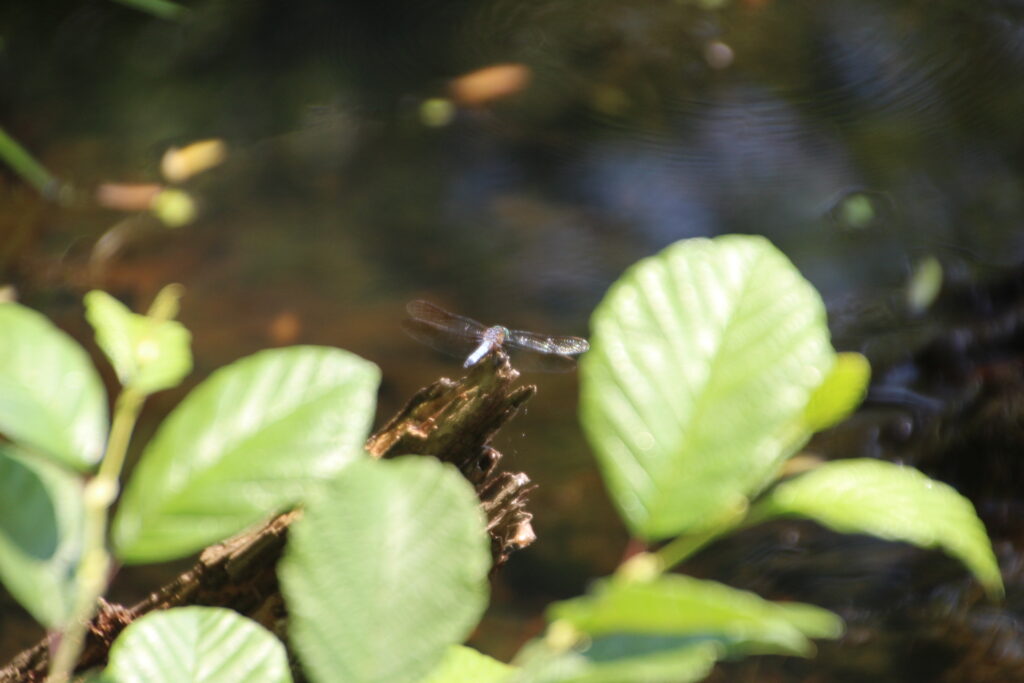
Entry #2: Lake Surprise (Mountainside, NJ) – July 1st 2021
Thursday July 1st at 2:30 PM. 75° F and very humid after a brief rain
After arriving to the site, the first thing noticed was that the ground was clearly much more wet and muddy than the previous times I had visited. Many plants’ roots were submerged underwater and the ground sunk under my steps. Directly next to the lake was a patch of plants sprouting from the ground where a copious amount of dragonflies sat. All around the site and above the lake, dragonflies flew, darting around, hovering in mid air. Different species of dragonfly were present as some were large with heavy black bodies and loud wings while others had small dainty light blue bodies with equally dainty wings. I witnessed multiple pairs of dragonflies mating. The pairs could fly together while mating, which was surprising, and one pair of large black dragonflies landed on a branch just a couple feet from where I sat. Their abdomens seemed to be joined together at the ends as they faced each other. After moving to get a closer look, the quickly abandoned the branch they had just sat on to flee from me.
In the muddy soil at Lake Surprise grows a tall spindly flowering plant, Earth loosestrife (Lysimachia terrestris) or Swamp candles. Using the native plant database from the Lady Bird Johnson Wildflower Center at UT Austin, I selected the New Jersey as the state I had found it in, and also selected yellow as the bloom color. After seeing the 700 results, I scrolled through and looked at the pictures of each plant to see which matched the plant I had found at the site. After seeing a plant with small yellow flowers with five petals and a ring of red inside – identical to the picture I took – I had found the plant. An interesting fact about Swamp candles is that they were introduced to cranberry bogs in the northwest US to promote biodiversity in the bogs.
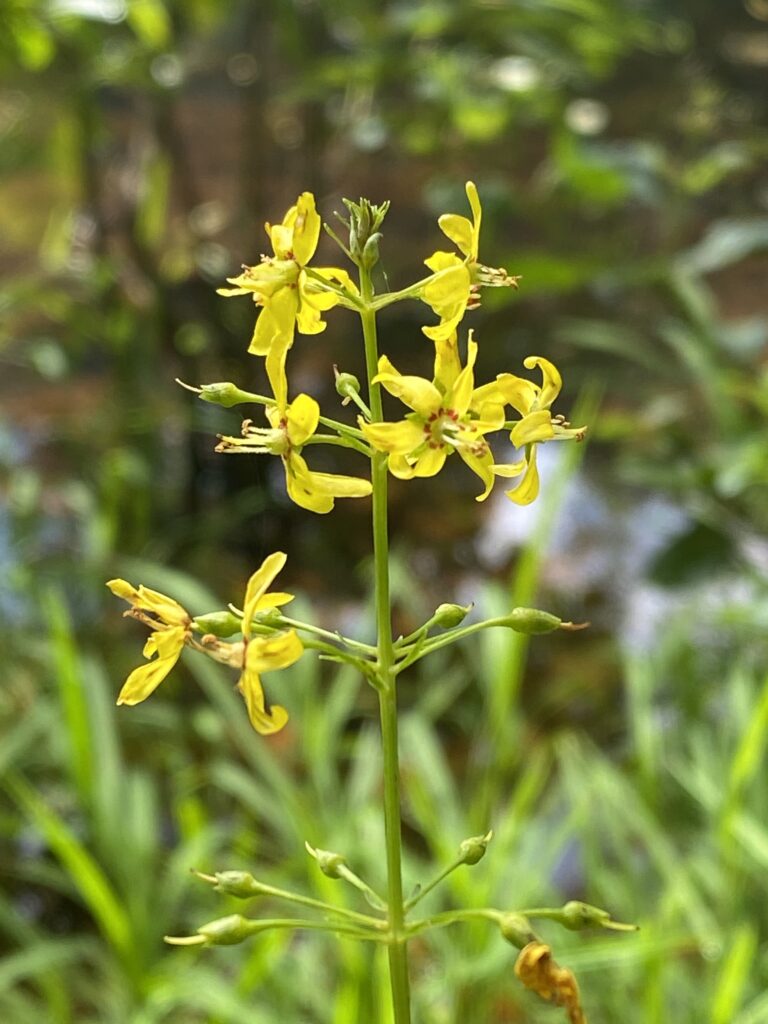
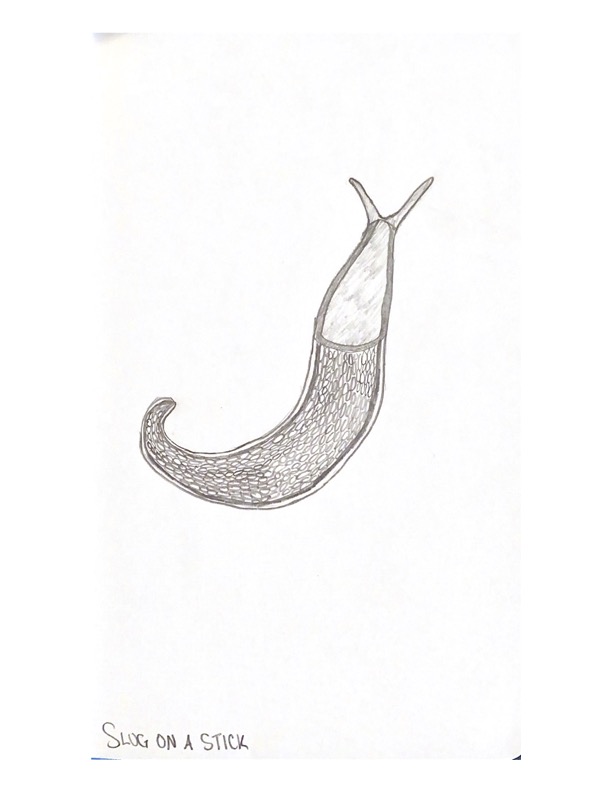
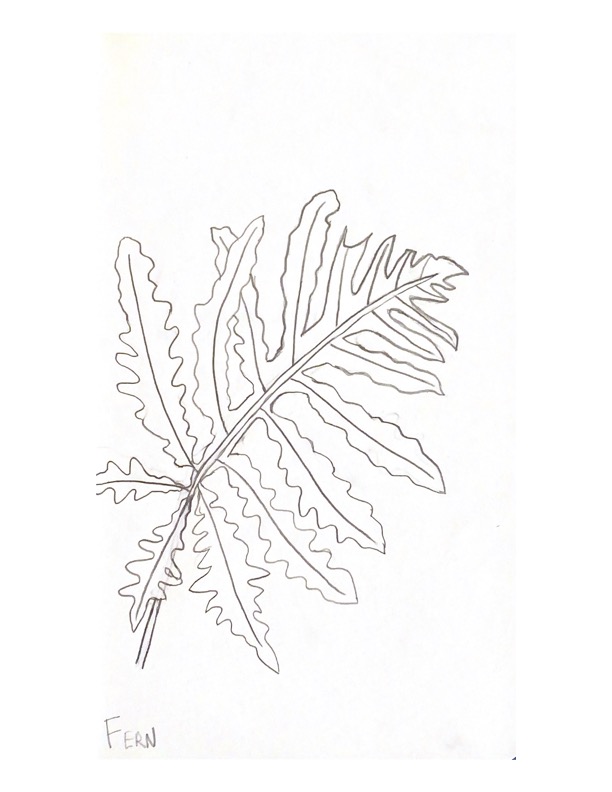
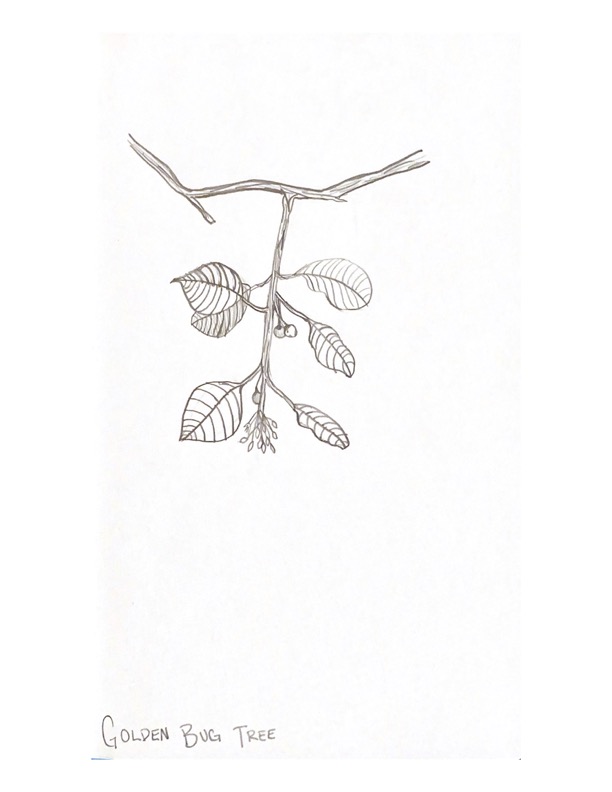
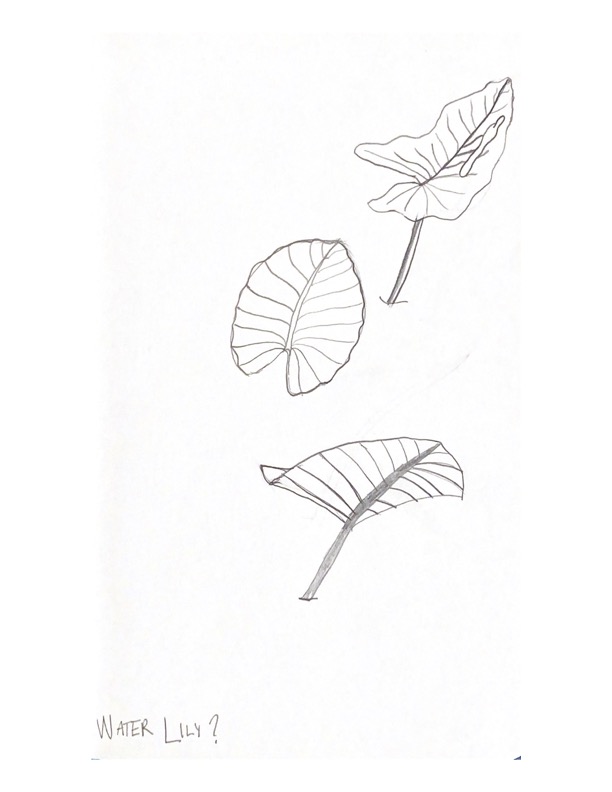
Sketching my objects was very time consuming and definitely tested my patience. For most of them, it was hard to find a comfortable position to draw in and I kept adjusting how I sat or stood but the perspective would change so I would have to stay in one position for a while to get the perspective down. Sketching made me more attentive to the surroundings and details of the site. I hadn’t paid attention to many of the bugs by the lake but sketching made me more aware of the different bugs visiting these plants. Next visit, I want to see how the buds on the tree changed from this past visit.
Entry #1: Lake Surprise (Mountainside, NJ) – June 24th 2021
Thursday June 24th at 4:00 PM. 73° F with a light breeze and low humidity
The site is muddy near the lake but dry a few feet inland. It is teeming with different plant and insect species. Tall grass grows on the land and water plants with pads similar to water lilies grow up from the water. Seemingly hundreds of dragon flies whiz around, skirting on the water; two dance and fly together. A green moss-like algae spans much of the lake’s surface. In spots near the shore, in direct sunlight, sunfish, trout, and other small fish can be seen. Tiny minnows gather near the surface of a small pool separate from the other fish. The lake bottom and shore is rocky and made up of dirt. Trees rooted in the ground right on the shoreline, lean and bow over the lake. All of the trees lining the shore are the same species with willowy branches and thin leaves. A black and white bird shakes the branches of one of the trees as it flies to and from its perch over the lake. The narrow footpaths are lined with dense ferns about 30 ft from the lake. The paths are heavy with leaf litter. An expanse of small single leaf plants lies in the center of the site from the shore to about 10 ft inland. They look like young water lily-like plants. Some tall flowering plants grow just off the shore in mud, offering blooms and buds in bright yellow. Granite is found on the underside of overturned rocks and a downed tree lays in the lake on the opposite shore. There are small frogs in the shaded mud and a turtle swims slowly through the algae in the center of the lake. Besides the noise pollution from hot heads revving their engines as they speed down the backroads, the only sounds present are the leaves in the wind, the frogs and fish moving in the water, and the birds calling out.
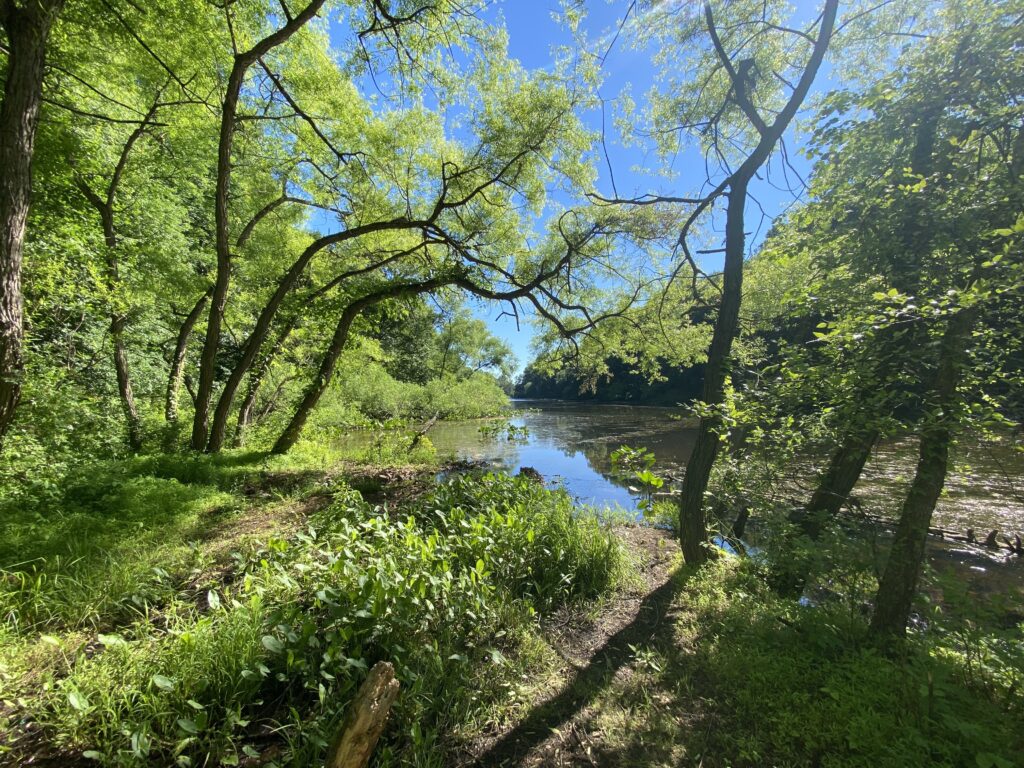
- Why are there so many dragonflies?
- How do they land and stay afloat on the water?
- Do dragonflies “dance”/fly together for mating purposes?
- Why are the trees bowed over the lake?
- How was the lake made (naturally or by man)?
- What type of algae/moss is in the water?
- What other fish species are present?
- Are the fish naturally in the lake or is the lake filled manually with fish every spring?
- Do the larger fish eat the minnows?
- Are the fish drawn to sunny spots or are they the only ones visible because they’re in a sunny spot?
- Why are frogs drawn to mud?
- What specific insects do frogs eat?
- What species of tree are the shoreline trees?
- Why do the tree species on the shore differ from the ones inland 15 feet?
- Why do the trees get shorter/more bowed closer to the lake/further from the forest?
- What type of grass is growing?
- How does the vegetation affect what animals live here?
- What is the species of the lilly pad -like water plants?
- Are the small single leaf plants young water lillies?
- Is there a keystone animal species?
- What does the turtle eat?
- What eats the turtle?
- How has human interaction affected the growth patterns of plants in area?
- How do the plants respond to different climates/conditions like the lake’s water level rising from heavy rainfall?
- Does the breeze shifting the direction of surface water affect any of the marine life?
- How does the path of the sun affect what grows where around the lake?
- How do the insect species interact and coexist?
- What competition occurs between species?
- Why do flies keep landing on me?
- How do terrestrial species interact with the marine species present?
- Why has this sunfish been swimming in circles for 10 minutes?
- How do species and relationships deeper in the forest affect those species and relationships nearer in the lake?
- How does noise pollution from cars affect species interaction?
How was the lake made?
Lake Surprise was previously the Blue Brook. In 1845, David Felt dammed Blue Brook to create a power source for his mill that housed his printing business (ucnj.org). But how was the Blue Brook formed? To get a broader perspective, Lake Surprise is a small lake in the Newark Basin which was formed 225 million to 185 million years ago as North America began to separate from Africa in the supercontinent Pangea (columbia.edu). The basin was filled with sediment and magma erupted three times, creating three layers of volcanic rock which weathered away sediments into the Newark Basin. In the last ice age that reached northern New Jersey, the Wisconsin glacier left behind melt water in the Newark Basin and other lowlands (greatswamp.org). This melt water may have filled the Raritan River as well as its tributaries including Green Brook which Blue Brook is a tributary of. This is a possible geologic history of Blue Brook and Lake Surprise.
I am very intrigued in the specific species that are present at the site, especially the ones I didn’t get a chance to see, and what their ecological roles in the community are. I found the abundant presence of dragonflies very interesting as well as the variation of plant species in the water, on the shoreline, and just a few feet inland.